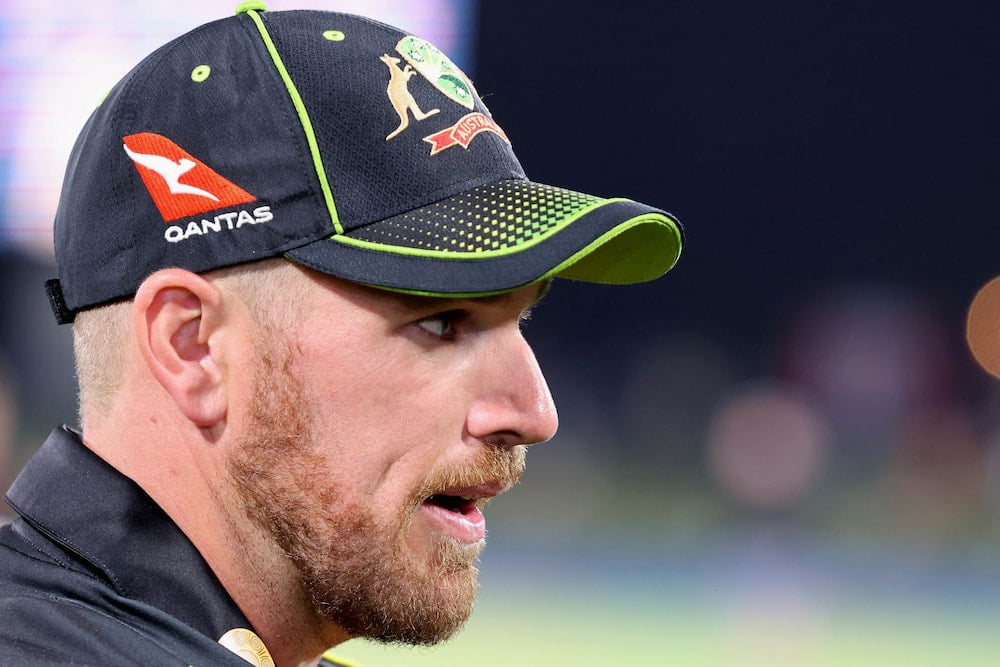Players don’t need reminding of Australia’s horror Twenty20 World Cup record.
It’s impossible to ignore the fact that after six attempts, Australia have reached the final just once and on the last two occasions failed to get out of the groups.
That is a far cry from norm in other formats for a team that has regularly topped the Test rankings and won four of the past six one-day World Cups.
“The reality is we haven’t performed at our best in World T20s,” captain Aaron Finch said ahead of Saturday’s night’s campaign opener against South Africa in the UAE.
“It’s a great opportunity. I feel as though our squad is good enough to win the World Cup and it does take a full squad to do.
“That’s definitely motivation but we’ve just got to be at our best at the right time.”
Australia’s reasons for their history of T20 World Cup struggles are varied.
There’s little doubt that in the early years, Australia was slower to catch onto the T20 phenomenon than others.
Player rotation has also been an issue, with big names often rested or even having T20 matches run concurrent with Test series.
The summer’s schedule also has its challenges, with Australia’s multi-format stars still rarely appearing in the Big Bash League.
A heavy focus was finally put on T20s before what was meant to be last year’s home World Cup, only for COVID-19 to intervene with the tournament postponed and moved elsewhere.
fBut regardless of the cause, the results are stark.
Australia have won just 55 per cent of games at the event, ranking them seventh overall.
The argument they don’t know how to bat in T20 cricket is a fallacy, given their average run-rate of 8.26 is the highest of all teams.
It is with the ball that they have been exposed, with only England conceding more runs per over than Australia of all Test-playing nations.
Much can be put down to Australia’s historical preference not to regularly play first-choice bowlers in T20 matches between World Cups.
For example Mitchell Starc, Pat Cummins and Josh Hazlewood have never played together in a T20 international.
Even allowing for the fact they potentially aren’t the country’s frontline T20 attack, Cummins has played just two international T20s in the past 18 months.
Australia’s hopes for this World Cup have been made no easier by the results of qualifying pool games.
Bangladesh’s loss to Ireland has put them in Australia’s group, just months after the Tigers shocked Australia with a 4-1 T20 series win.
Sri Lanka are the other qualifier in their group, joining England, South Africa and West Indies.
Australia will have to win four of those games to progress to the semi-finals, with anything less meaning a reliance on other results.
Otherwise they will meet the same fate as their 2009, 2014 and 2016 campaigns, which end in the groups.
They went one better in 2007 and 2012, but were beaten comfortably in semi-finals.
Their best chance came in 2010, when they went through undefeated into the final after Michael Hussey’s masterful semi-final chase against Pakistan.
His 60 off 24 balls remains the brightest spark in Australia’s T20 history, before their loss to England in the decider two days later.
AAP
Get all the latest Canberra news, sport, entertainment, lifestyle, competitions and more delivered straight to your inbox with the Canberra Daily Daily Newsletter. Sign up here.



